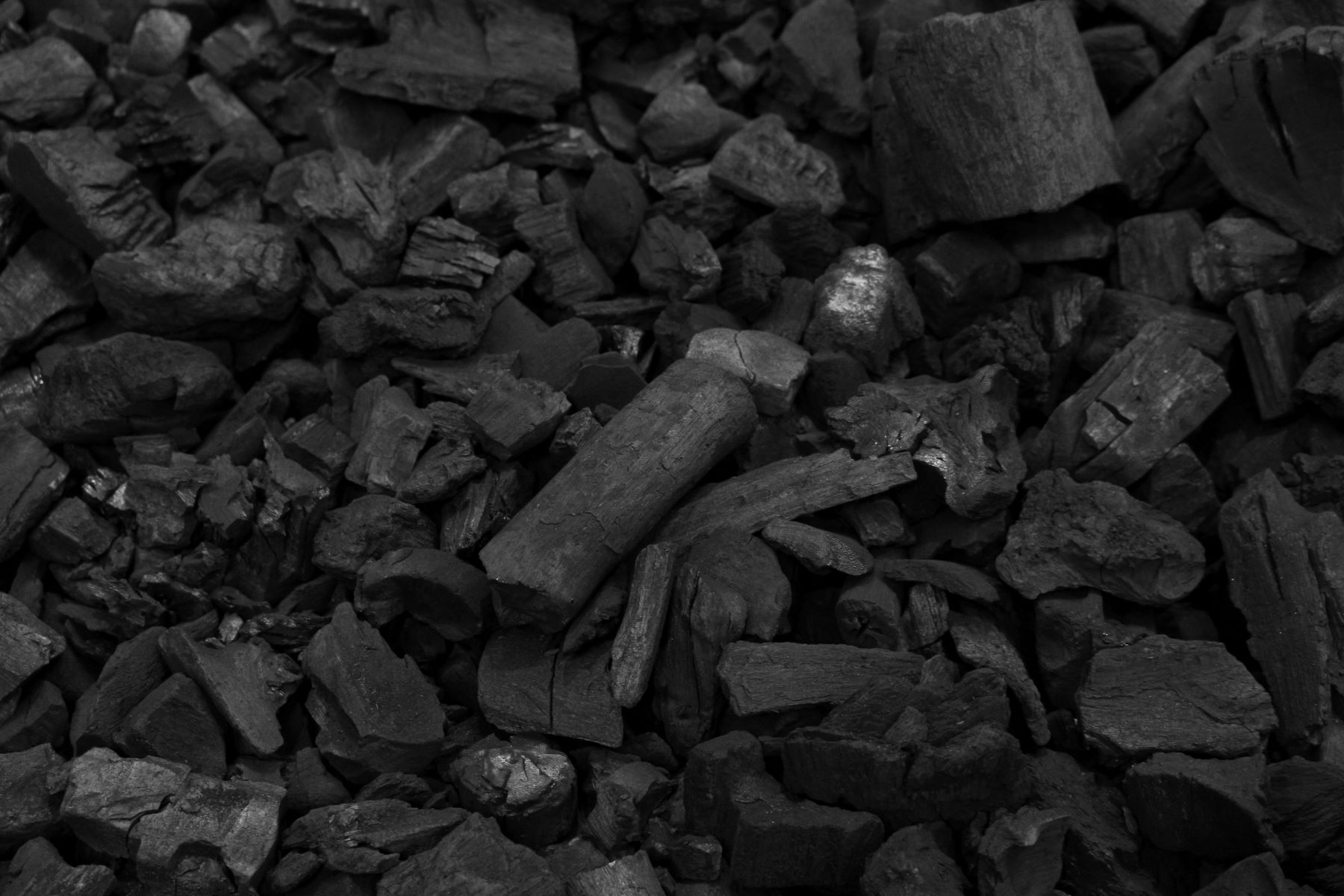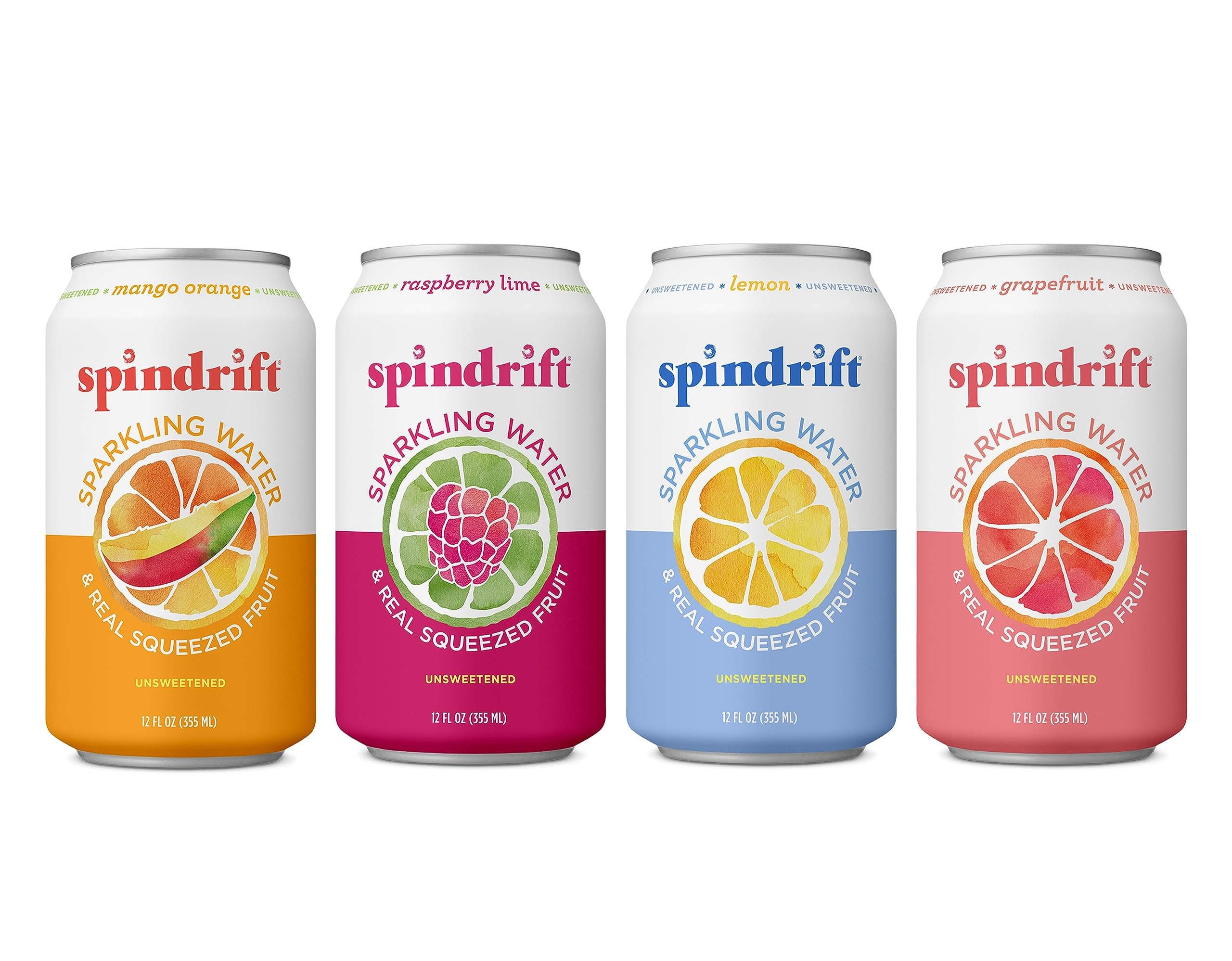Home>Science>Discover The Surprising Alternatives To Activated Carbon And Charcoal!


Science
Discover The Surprising Alternatives To Activated Carbon And Charcoal!
Published: February 1, 2024
Explore the science-backed alternatives to activated carbon and charcoal. Discover innovative solutions for a sustainable future.
(Many of the links in this article redirect to a specific reviewed product. Your purchase of these products through affiliate links helps to generate commission for Regretless.com, at no extra cost. Learn more)
Table of Contents
Introduction
Activated carbon and charcoal have long been the go-to materials for a wide range of applications, from air and water purification to skincare and odor elimination. However, as the world continues to seek sustainable and eco-friendly alternatives, the spotlight has shifted to a variety of surprising substitutes that offer comparable or even enhanced benefits. In this article, we will delve into the realm of alternative materials that are gaining traction for their diverse applications and eco-conscious appeal.
From zeolites and biochar to coconut husk, silica gel, and activated alumina, the world of alternatives to activated carbon and charcoal is rich and diverse. Each material brings its own unique set of properties and applications, making them viable options for a wide array of uses. As we explore these alternatives, we will uncover the fascinating properties and benefits that make them stand out in their respective fields. Whether it's sustainability, efficiency, or renewability, these alternatives offer compelling reasons to consider them in lieu of traditional activated carbon and charcoal.
As we embark on this journey of discovery, prepare to be amazed by the ingenuity of nature and human innovation, which have given rise to these remarkable alternatives. Let's delve into the world of zeolites, biochar, coconut husk, silica gel, and activated alumina, and uncover the hidden potential that lies within these surprising substitutes.
Zeolites: A Natural Alternative
Zeolites, often referred to as nature's molecular sieves, are a group of minerals renowned for their porous structure and remarkable adsorption properties. These aluminosilicate minerals boast a honeycomb-like framework, characterized by a network of channels and cavities that enable them to selectively trap molecules based on size, shape, and polarity.
One of the defining features of zeolites is their versatility, finding applications in various industries, including environmental remediation, agriculture, and even nuclear waste management. Their ability to effectively capture and release molecules makes them invaluable in water purification, where they can remove heavy metals, ammonia, and other contaminants. Additionally, zeolites play a pivotal role in soil improvement, acting as natural fertilizers and enhancing nutrient retention for plant growth.
Beyond their environmental applications, zeolites have made their mark in the realm of skincare and beauty products. Due to their gentle exfoliating properties and ability to absorb excess oil and impurities, zeolites are a popular ingredient in facial cleansers, masks, and exfoliants. Their natural origin and gentle nature make them an appealing alternative to synthetic additives, aligning with the growing demand for clean and natural beauty solutions.
Furthermore, zeolites have shown promise in the realm of gas separation and storage, contributing to advancements in energy-efficient technologies and sustainable gas purification processes. Their ability to selectively adsorb gases such as carbon dioxide and methane positions them as a valuable player in the quest for cleaner energy solutions and reduced greenhouse gas emissions.
In the agricultural sector, zeolites are harnessed for their water retention capabilities, aiding in moisture management and enhancing soil structure. This, in turn, contributes to improved crop yield and resilience, making zeolites a sought-after natural solution for sustainable agriculture practices.
As we witness the increasing emphasis on sustainability and eco-conscious practices, zeolites emerge as a compelling natural alternative to activated carbon and charcoal. Their multifaceted applications, coupled with their environmentally friendly profile, position them as a versatile and impactful substitute in various industries. With their innate ability to address diverse challenges, zeolites stand as a testament to the ingenuity of natural materials and their potential to shape a more sustainable future.
Biochar: A Sustainable Option
Biochar, often hailed as the "black gold" of agriculture, is a sustainable and environmentally friendly alternative to traditional activated carbon and charcoal. This carbon-rich material is produced through the process of pyrolysis, which involves heating organic biomass in a low-oxygen environment. The resulting biochar is characterized by its porous structure, high surface area, and remarkable stability, making it a valuable asset in diverse applications.
In the realm of agriculture, biochar has garnered attention for its ability to enhance soil fertility and promote carbon sequestration. When incorporated into soil, biochar serves as a long-term carbon sink, effectively locking carbon dioxide away for hundreds or even thousands of years. This not only aids in mitigating climate change by reducing atmospheric carbon levels but also contributes to soil health and resilience.
Furthermore, biochar's porous nature provides an ideal habitat for beneficial microorganisms, fostering a thriving soil ecosystem and promoting nutrient cycling. By retaining moisture and essential nutrients, biochar supports plant growth and resilience, making it a valuable tool for sustainable agriculture practices. Its enduring stability ensures that the benefits of biochar persist over extended periods, offering a sustainable solution for soil enrichment and carbon management.
Beyond its agricultural applications, biochar plays a pivotal role in environmental remediation, particularly in the realm of water and air purification. Its high porosity and adsorption capacity enable it to effectively capture pollutants and contaminants, making it a valuable tool for wastewater treatment and remediation of contaminated soils. Additionally, biochar's use in filtration systems contributes to the removal of impurities and toxins, aligning with the growing demand for sustainable and eco-friendly water treatment solutions.
In the context of renewable energy, biochar emerges as a byproduct of bioenergy production, contributing to the efficient utilization of organic waste materials. Through the conversion of biomass into biochar, the process of pyrolysis not only produces a valuable carbon-negative material but also generates renewable energy in the form of bio-oil and syngas. This integrated approach underscores the sustainability and resource efficiency of biochar production, offering a compelling alternative to traditional fossil fuel-based energy generation.
As the world seeks sustainable and regenerative solutions to address environmental challenges, biochar stands out as a versatile and impactful alternative to activated carbon and charcoal. Its role in soil enrichment, carbon sequestration, and environmental remediation positions it as a sustainable ally in the pursuit of a greener and more resilient planet. With its diverse applications and eco-conscious appeal, biochar exemplifies the potential of harnessing natural materials to foster sustainable development and environmental stewardship.
Coconut Husk: A Renewable Substitute
Coconut husk, also known as coir, has emerged as a compelling renewable substitute for traditional activated carbon and charcoal, offering a range of applications that capitalize on its natural abundance and eco-friendly properties. Derived from the fibrous outer shell of coconuts, this versatile material has garnered attention for its remarkable adsorption capabilities, biodegradability, and sustainable sourcing.
One of the primary appeals of coconut husk lies in its renewable and abundant nature. As a byproduct of the coconut industry, coir presents an eco-conscious alternative that harnesses a resource that would otherwise go to waste. The utilization of coconut husk not only adds value to agricultural waste but also contributes to the reduction of environmental impact, aligning with the principles of circular economy and sustainable resource management.
In the realm of water and air purification, coconut husk-based activated carbon has shown promise in effectively removing impurities and contaminants. Its high porosity and large surface area make it well-suited for adsorbing pollutants, odors, and volatile organic compounds, offering a natural and sustainable solution for enhancing water and air quality. Additionally, the biodegradable nature of coconut husk presents a compelling advantage, as it minimizes the environmental footprint associated with the disposal of used filtration materials.
Furthermore, coconut husk finds applications in horticulture and agriculture, where it serves as a sustainable growing medium and soil amendment. Coir's moisture retention properties and ability to promote aeration make it an ideal substrate for plant cultivation, contributing to water conservation and improved soil structure. Its biodegradability ensures that it integrates seamlessly into the soil, enriching it with organic matter and fostering a healthy and sustainable growing environment for plants.
Moreover, the versatility of coconut husk extends to the realm of eco-friendly products, including biodegradable mulches, erosion control mats, and sustainable packaging materials. Its natural resistance to rot and decay, coupled with its eco-friendly profile, positions coconut husk as a valuable resource for creating environmentally responsible solutions across various industries.
As the world shifts towards sustainable and renewable alternatives, coconut husk emerges as a renewable substitute that embodies the principles of eco-conscious innovation and resource efficiency. Its diverse applications, renewable sourcing, and eco-friendly attributes underscore its potential as a sustainable ally in addressing environmental challenges and promoting circular and regenerative practices.
The versatility and eco-friendly nature of coconut husk position it as a renewable substitute with the potential to drive positive environmental impact and contribute to a more sustainable and resilient future.
Silica Gel: An Efficient Alternative
Silica gel, often recognized for its role as a desiccant in packaging and moisture-absorbing applications, emerges as an efficient alternative to traditional activated carbon and charcoal. This versatile material, composed of silicon dioxide in an amorphous and porous form, exhibits exceptional adsorption properties, making it a valuable asset in a diverse range of industries.
One of the defining features of silica gel is its high surface area and porous structure, which enable it to effectively adsorb and retain moisture, gases, and various organic compounds. This characteristic makes silica gel a popular choice for preserving the integrity of products sensitive to moisture, such as pharmaceuticals, electronics, and leather goods. Its ability to maintain a dry environment within sealed packages contributes to the protection of goods from degradation and spoilage, underscoring its significance in maintaining product quality and shelf life.
Beyond its role in moisture control, silica gel finds applications in chromatography, a crucial technique employed in chemical analysis and purification processes. The porous nature of silica gel facilitates the separation of complex mixtures based on the differential adsorption and migration of components, contributing to the purification of compounds and the isolation of target substances. This pivotal role in chromatographic processes highlights the efficiency and precision of silica gel as a separation medium, underscoring its value in scientific and industrial settings.
Moreover, silica gel's adsorption capabilities extend to the realm of gas purification and dehydration, where it aids in the removal of impurities and moisture from compressed air and natural gas. Its high adsorption capacity and thermal stability make it a reliable choice for maintaining the purity and integrity of gases in various industrial processes, contributing to enhanced operational efficiency and product quality.
Furthermore, silica gel's non-toxic and inert nature adds to its appeal as a safe and environmentally friendly alternative. Its ability to be regenerated and reused through simple heating processes further enhances its sustainability, offering a cost-effective and eco-conscious solution for moisture control and adsorption applications.
As the world seeks efficient and sustainable alternatives, silica gel stands out as a versatile and reliable substitute to traditional activated carbon and charcoal. Its multifaceted applications, coupled with its efficiency and eco-friendly attributes, position it as a valuable ally in diverse industries, contributing to enhanced product quality, process efficiency, and environmental stewardship.
The efficiency and versatility of silica gel underscore its potential as an impactful alternative that aligns with the evolving demands for sustainable and effective materials across various sectors.
Activated Alumina: A Versatile Replacement
Activated alumina, a highly porous and granular form of aluminum oxide, has emerged as a versatile replacement for traditional activated carbon and charcoal, offering a wide array of applications that capitalize on its unique properties and adsorption capabilities. This remarkable material, known for its high surface area and adsorption capacity, finds widespread use in diverse industries, ranging from air and gas purification to dehydration and catalyst support.
One of the defining features of activated alumina is its ability to selectively adsorb moisture from air and gases, making it a valuable asset in air drying and purification processes. Its porous structure allows for the efficient capture of water vapor and other impurities, contributing to the production of dry and high-quality air in various industrial and commercial settings. Additionally, activated alumina serves as a reliable desiccant in compressed air systems, ensuring the removal of moisture to prevent corrosion and equipment damage, thereby enhancing operational efficiency and equipment longevity.
Furthermore, activated alumina plays a pivotal role in the purification of gases, particularly in the removal of impurities such as sulfur compounds and moisture from natural gas streams. Its high adsorption capacity and chemical stability make it an ideal choice for maintaining the purity and integrity of gases in industrial processes, contributing to enhanced product quality and compliance with stringent quality standards.
In the realm of water treatment, activated alumina serves as an effective medium for the removal of fluoride and other contaminants from drinking water. Its selective adsorption properties enable it to capture fluoride ions, offering a reliable solution for addressing water fluoridation concerns and ensuring the delivery of safe and potable water to communities. This application underscores the critical role of activated alumina in addressing water quality challenges and promoting public health.
Moreover, activated alumina finds use as a catalyst support in various chemical and petrochemical processes, where its high surface area and stability facilitate the deposition and activation of catalytic materials. This supports the efficient conversion of feedstocks and the production of valuable chemicals and fuels, underscoring its significance in catalytic applications.
The versatility and efficacy of activated alumina position it as a valuable and versatile replacement for traditional activated carbon and charcoal, offering a range of applications that contribute to enhanced air and gas quality, water treatment, and catalytic processes. Its multifaceted capabilities and reliability make it a compelling choice for industries seeking efficient and sustainable solutions to address diverse challenges.
Conclusion
In conclusion, the realm of alternatives to activated carbon and charcoal presents a rich tapestry of natural and sustainable materials that offer compelling benefits across diverse industries. From zeolites and biochar to coconut husk, silica gel, and activated alumina, these surprising substitutes have demonstrated their potential to address a wide array of challenges while aligning with the principles of sustainability and environmental stewardship.
Zeolites, with their remarkable adsorption properties and multifaceted applications, have emerged as a versatile natural alternative that finds use in environmental remediation, agriculture, skincare, and gas separation. Their innate ability to selectively trap molecules and enhance soil fertility positions them as a sustainable ally in the pursuit of cleaner energy solutions and regenerative agricultural practices.
Biochar, celebrated for its role in soil enrichment, carbon sequestration, and environmental remediation, stands as a sustainable option that offers long-term benefits for agriculture, carbon management, and renewable energy production. Its porous structure and stability make it a valuable asset in promoting soil health and mitigating climate change, underscoring its significance in sustainable development.
Coconut husk, a renewable substitute derived from a byproduct of the coconut industry, embodies the principles of circular economy and sustainable sourcing. Its applications in water and air purification, horticulture, and eco-friendly products highlight its potential to drive positive environmental impact and contribute to a more sustainable and resilient future.
Silica gel, renowned for its efficiency in moisture control and gas purification, offers a reliable alternative that caters to diverse industrial needs, from preserving product integrity to supporting chromatographic processes. Its non-toxic and inert nature, coupled with its regenerative capabilities, positions it as an eco-friendly solution for moisture-absorbing applications.
Activated alumina, with its versatility in air and gas purification, water treatment, and catalytic support, emerges as a valuable and reliable replacement for traditional activated carbon and charcoal. Its efficacy in maintaining air and gas quality, addressing water fluoridation concerns, and facilitating catalytic processes underscores its significance in diverse industrial applications.
As we embrace the evolving landscape of sustainable materials and solutions, these surprising alternatives to activated carbon and charcoal offer a glimpse into the potential of natural and renewable resources to drive positive environmental impact and support sustainable development. Their diverse applications and eco-conscious appeal pave the way for a future where sustainability and innovation converge to address pressing global challenges and foster a more resilient and harmonious relationship with the planet.














